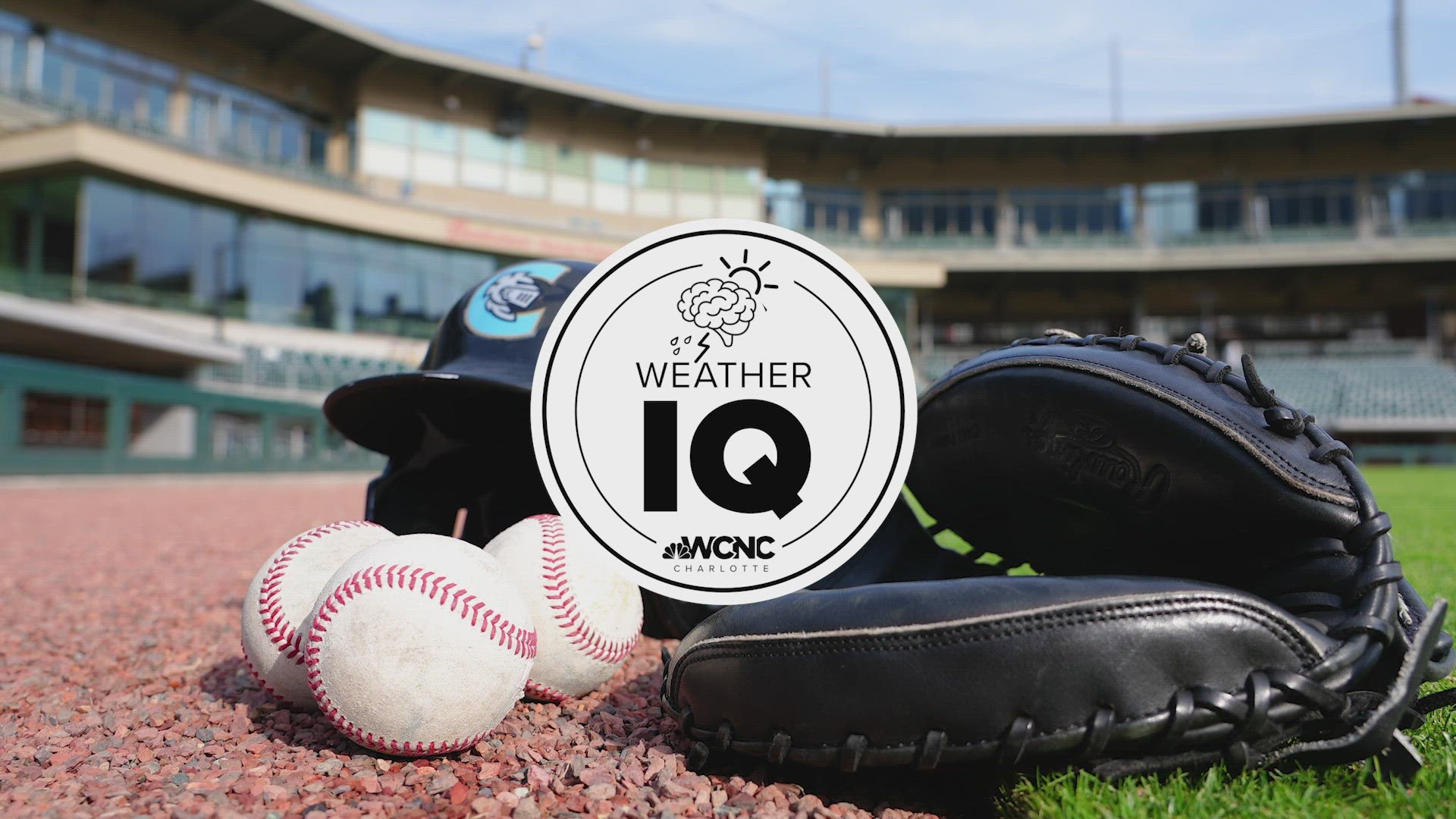CHARLOTTE, N.C. —
From the beginning to the end of the baseball season, weather can drastically impact the way a baseball moves through the air. Here’s how weather changes the sport. "Let’s play ball with the Charlotte Knights!"
How weather impacts baseball:
Cold temperatures:
When it is cold and dry out, this is great pitching weather. Curveballs and sliders will have a better break when the air is drier and colder because the air is more dense.
This denser air allows for more drag on the ball, which enhances the spin. When the batter does make contact, this cold, dense air won’t allow the ball to travel as far. This is why a good hit may only reach the warning track instead of being knocked out of the park.
Cold air has its molecules packed closer together. This slows down any object moving through the air. This is why there are usually fewer home runs earlier in the season compared to later on in the summer month when the air is less dense.
As a result, a coach may move outfielders in during the earlier portion of the season.
Warm weather:
As the season progresses and the weather becomes warmer and more humid, the advantage moves to the batter. This is because the ball will travel farther. Those breaking balls will also break less.
Warm air is less dense than cold air. The molecules are spaced further apart. Thus there is less drag on the flight of a baseball. This can add an extra 20 feet onto the flight of the ball.
Humid air:
Believe it or not, humid or muggy air is lighter than dry air since the water vapor molecules are less dense than the nitrogen and oxygen it replaces. (Note: Nitrogen and Oxygen are the most abundant elements in the air.)
Oxygen has an atomic weight of 16 atomic mass units. Nitrogen is 14. Hydrogen has the lightest weight of 1 atomic unit.
- Water vapor (H20) is 1+1+16= 18 atomic units.
- Nitrogen and Oxygen are diatomic in our atmosphere (N2 and O2).
- N2 is 14+14=28 atomic units
- O2 is 16+16=32 atomic units
While hot and muggy weather may not be the best for sitting in the stands, the ball travels more freely in these uncomfortable conditions.
H2O
Sky conditions:
On a cloudy day, especially when those clouds are white, high-fly balls can be lost in the sky leading to more errors. On super sunny days, the sun can get in your eyes leading to the same result.
Winds:
Wind can be a good thing depending on the direction.
A wind from the first base line will favor right-handed hitters that typically pull the ball out to left field. A prevailing breeze from the third base line will favor right-handed hitters.
Contact Chris Mulcahy at cmulcahy@wcnc.com and follow him on Facebook, Twitter, Instagram and TikTok.
WCNC Charlotte’s Weather IQ YouTube channel gives detailed explainers from the WCNC Charlotte meteorologists to help you learn and understand weather, climate and science. Watch previous stories where you can raise your Weather IQ in the YouTube playlist below and subscribe to get updated when new videos are uploaded.

